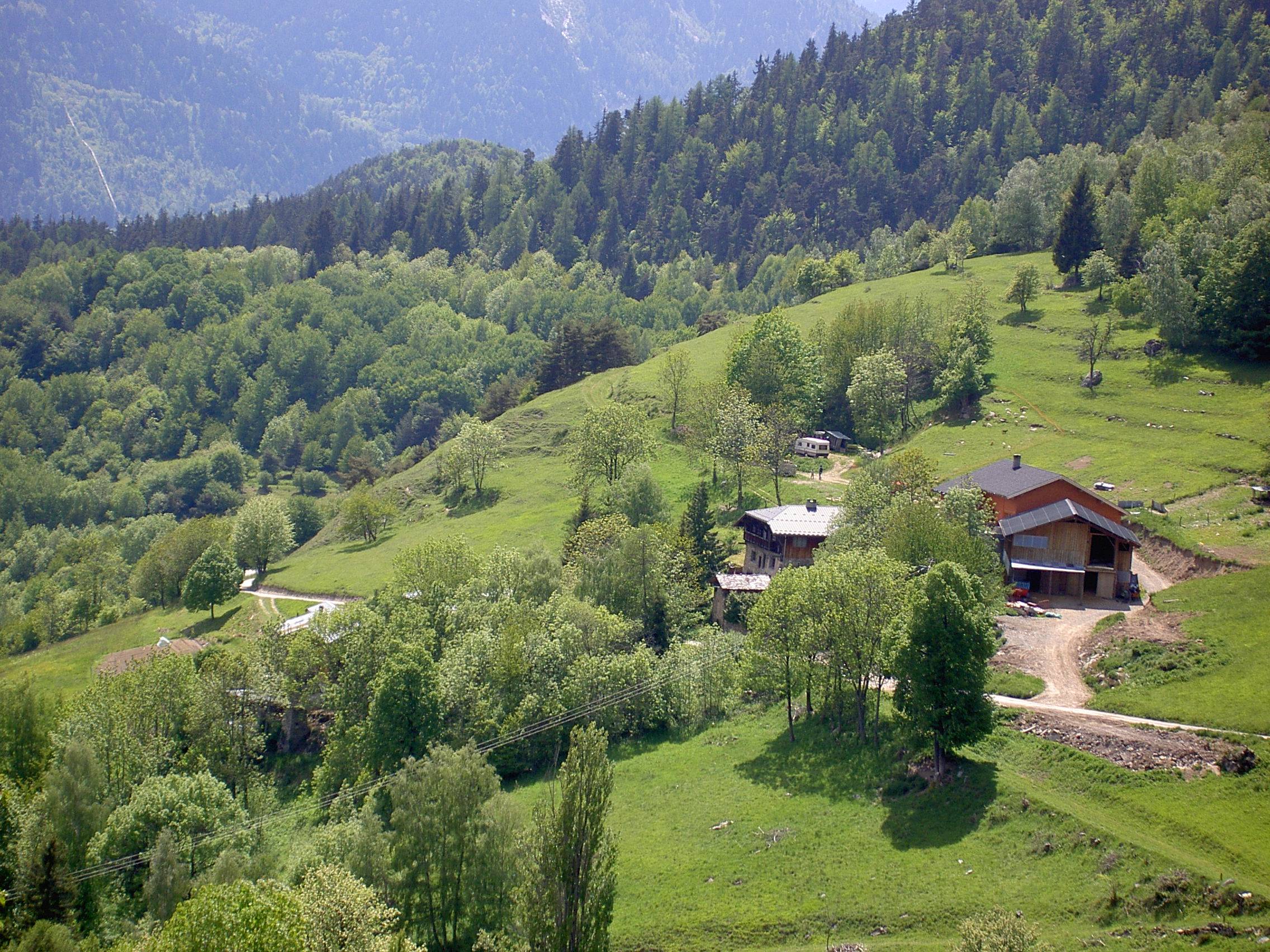
La Faverge: mountain pastures and woodland
Setting off from Hautecour lake, this enjoyable and varied circular trail will have you stopping every few pedals: snack breaks and artistic curiosities, scenic viewpoints and mountain pastures perfect for a nap, archaeological heritage and leisure centre.
Description
Follow the red waymarks: La Faverge.
E-bike rental shops:
Mout'n Bike
328 avenue de la Libération
73600 Moutiers, FRANCE
+33 (0)9 63 25 13 76
Intersport Montalbert
73210 Plagne Montalbert
+33 (0)4 79 09 78 28
- Departure : La Trappe lake leisure centre, 73600 Hautecour
- Arrival : La Trappe lake leisure centre, 73600 Hautecour
- Towns crossed : HAUTECOUR, AIME-LA-PLAGNE, and AIGUEBLANCHE
Forecast
Altimetric profile
Recommandations
If in doubt, you can take an introductory lesson in how to ride an electric bike with an instructor.
If you see a herd ahead, slow down and go round it. If there is a patou, a guard dog, climb down from your bike and walk, pushing it alongside you. Avoid making any sudden or aggressive gestures towards the dog and move away from the herd slowly and calmly. The dog will only be checking that you do not pose a threat to its herd. Respect the parkland and close gates behind you after you've gone through them.
The mountain is living, please respect it by staying on the paths and tracks.
Information desks
80 Square de la Liberté, 73600 Moûtiers
Transport
Dial-a-ride bus service on Tuesdays and Fridays. Since this is a booking-only service, be sure to call by 16:00 the day before. Enquiries with Transdev: +33 (0)4 79 24 21 58 or +33 (0)4 79 24 24 46
Access and parking
Parking :
Accessibility
- Emergency number :
- 114
8 points of interest
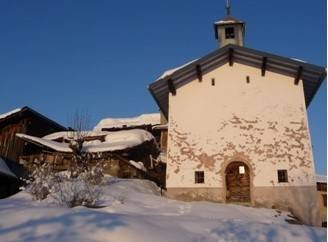
Chapelle Saint Roch et Saint Sébastien - CCCT  Small heritage
Small heritageSt Roch's and St Sébastien's Chapel
Built in the wake of a plague outbreak in 1618, this chapel is dedicated to St Roch, St Sebastian and St Fabian.
St Roch and St Sebastian, commonly invoked against the plague which struck Europe during this period, have remained the village's guardians. They are depicted in the sculptures and paintings of the altar, erected in 1874. In 2005-2006, the rough plaster on the main façade was restored according to the traditional method of old, and a new sundial was painted.
To the left of the chapel is an intriguing feature: a monolithic carved stone cross which would seem to predate the Christian era. It may have been used in reverence of Janus, for on the back are two sculpted heads symbolising Day and Night. In the middle is a hollow square, probably used as a box for offerings.
Le Boilet - Bénédicte Mileze  Water
WaterLe Boilet
Le Boilet is the only stream to flow through the municipality of Hautecour. Diverted from its initial course in the past, it was used as a headrace to supply water to the sawmills and other mills in the hamlets of Le Villard et Les Moulins. Along some stretches, it strayed off course, creating little ponds called nays, which the community used for soaking hemp. Water from the stream was also used to put out fires, water crops, for livestock to drink and for chores. Since 1990, it has been deviated to supply La Trappe lake.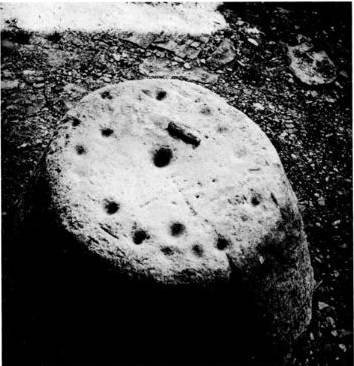
Pierre à cupules de Montgirod - aptv_redac  Archaeology
ArchaeologyMontgirod's stone pitted with cupmarks
The village of Montgirod is home to some surprising heritage gems: a horizontal sundial and a stone pitted with cupmarks dating back to the Bronze Age. The stone was discovered in the village, although not exactly where it now stands, in front of Montgirod's church. It has round shapes and channels on it. We still do not have any clear idea of what purpose it served or the uses made of it: some seem figurative, others functional (perhaps for ritual libations, astronomic devices or border markers).
Chalet de la Faverge - aptv_redac  Pastoralism
PastoralismLa Faverge mountain pasture
In summer months, the chalet and barn of La Faverge are used by the agricultural partnership GAEC Saint Guérin, which rears dairy cows.
In days gone by, the long barn could house up to 150 or so cows. They would be brought in at night, in bad weather or during heatwaves. The stream flowed across the building from one side to the other to make it easier to clean. The shepherd (also known as the séracier, gouverneur or pachonnier) was responsible for milking the cows twice a day, once at half-past three in the morning and again at half-past two in the afternoon. The milk was then brought to the chalet, "l'arbé", in milk churns called bouilles, which were carried on the workers' backs. It would then be turned into cheese and Sérac, which is a type of whey cheese.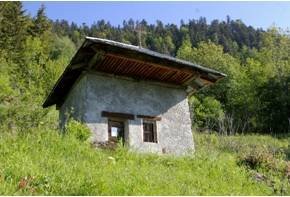
La chapelle de Pradier - Bénédicte Mileze  Small heritage
Small heritagePradier Chapel
This chapel is dedicated to St Bernard of Monjoux (1020-1081), the patron saint of mountain folk and climbers, skiers, residents and visitors to the Alps. Probably built in 1610, it received the pastoral visit of His Grace Benoît Théophile de Chevron-Villette, Bishop of Tarentaise, in 1634 and 1653. The interior décor features two scenes from the life of the patron saint as well as wall paintings of Alpine flowers. It was last restored, by Pradier locals, in 1984.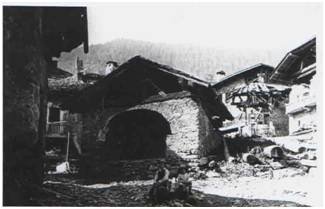
Ancien four banal au village du Breuil - Bénédicte Mileze  History
HistoryOld communal oven in Le Breuil village
Houses with vaulting, typical of the local architecture, can be seen in this traditional Savoyard village, which also has a communal oven that has recently been renovated. The date this oven was built is unknown. Its 60 to 80cm-thick solid walls are built on rock foundations. The location of such a bread oven was always chosen a good distance away from dwellings and near a source of water. In the olden days, everyone knew how to make bread: it was baked in the communal oven once a month. The oven was pre-heated using firwood. The temperature was checked by throwing in a pinch of flour or a scrap of newspaper, and if it turned the colour of perfectly baked bread, it was hot enough. The remaining charred wood was taken out using "the scraper" and the oven was cleaned using a damp cloth. The loaves of bread were then put in using a long-handled timber peel. Baking time was usually about an hour.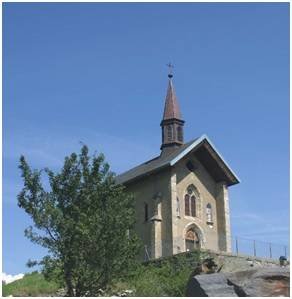
Chapelle Sainte Agathe et Sainte Marguerite - Bénédicte Mileze  Small heritage
Small heritageSt Agathe's and St Marguerite's Chapel
Thanks to its prime location on a rocky promontory, this Gothic Revival-style chapel has become a landmark of the hamlet of Le Breuil.
It was built using funds donated by the village community and above all owing to the generosity of one of its most prominent locals: His Grace André Charvaz (1793-1870), who rose to become Archbishop of Genoa from 1852 to 1869.
Building work began in 1864 and ended in 1866. Myriad statues grace the interior, and the two women saints are depicted in the stained-glass windows.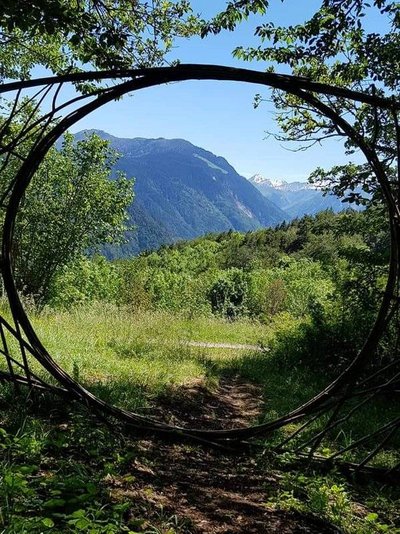
Sentier artistique Lez'arts en Adret - Jean Bert  Know-how
Know-howLez'arts en Adret
This artistic trail is dotted with exhibits by local and other artists. An outdoor art gallery with stone, timber or even straw showpieces! Highly original, they look right at home in the landscape.
Choose from two Land'ART circular routes:
Family-friendly trail around the lake: 800m
A longer trail going further afield, to the hamlets of Le Villard then Le Pradier (with stunning views over the peaks, and a goat farm among other delights): 4.5km

